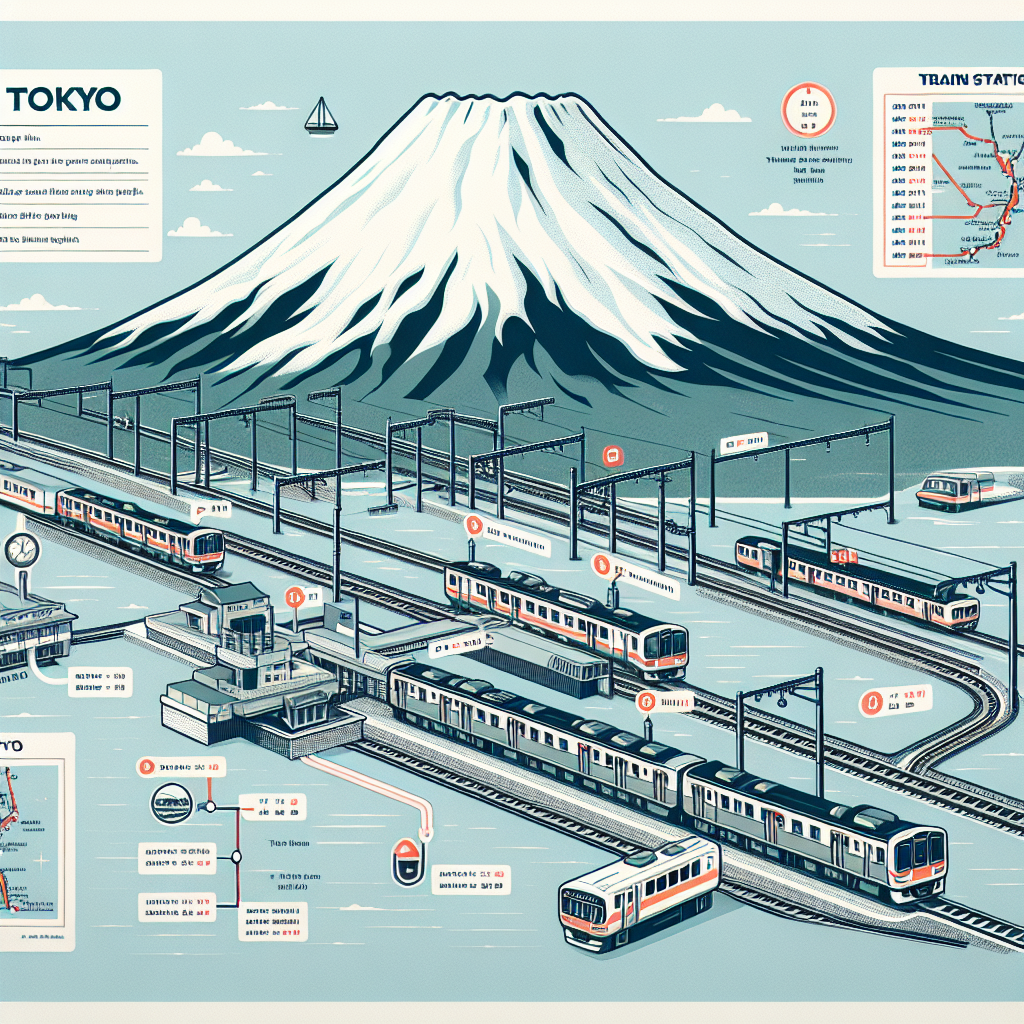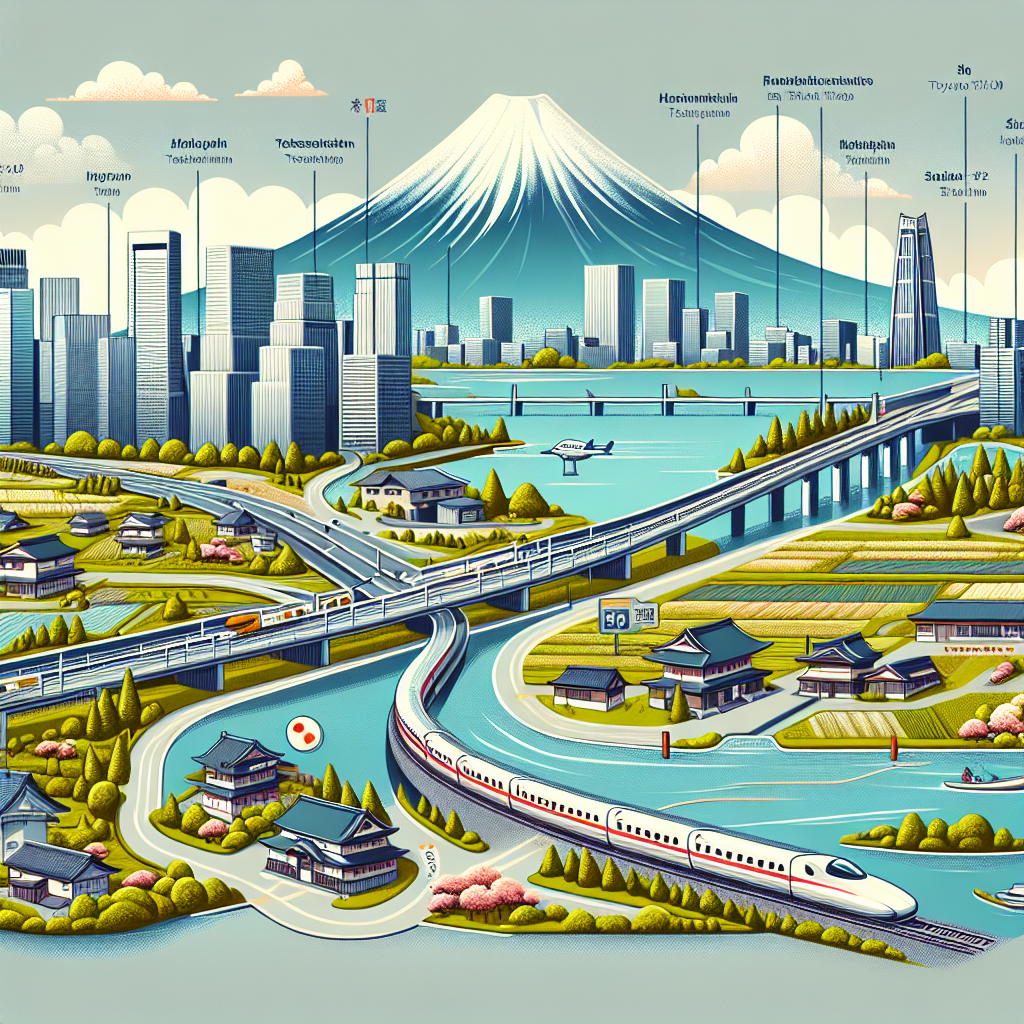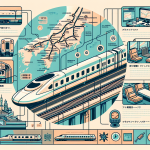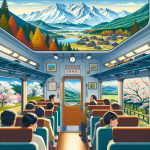-
Table of Contents
“Seamless Journeys: Your Guide to Reaching Mount Fuji from Tokyo by Train!”
Traveling from Tokyo to Mount Fuji by train is a convenient and scenic journey that allows visitors to experience Japan’s iconic landscape. With efficient rail options, travelers can choose from several routes that offer stunning views of the mountain along the way. This guide will outline the best train routes, provide essential tips for a smooth trip, and highlight key stops and attractions to enhance your experience as you make your way to one of Japan’s most famous landmarks. Whether you’re planning a day trip or a longer stay, understanding your options will help you make the most of your journey to Mount Fuji.
Explore the breathtaking beauty of Mount Fuji! Discover the best train routes and essential tips for your journey from Tokyo to this iconic landmark. Don’t miss out on this unforgettable experience—plan your trip today! For detailed information, visit japan-trains.com.
Best Train Routes from Tokyo to Mount Fuji
Traveling from Tokyo to Mount Fuji is a delightful journey that offers a blend of urban excitement and breathtaking natural beauty. If you’re planning a trip to Japan’s iconic peak, taking the train is one of the most convenient and scenic options available. There are several train routes you can choose from, each with its own unique charm and advantages.
One of the most popular routes is via the JR Chuo Line, which takes you from Tokyo to Otsuki Station. This route is particularly appealing because it allows you to enjoy the picturesque landscapes of the Japanese countryside as you travel. Once you arrive at Otsuki, you can transfer to the Fujikyu Railway, which will take you directly to the Fuji Five Lakes area. This area is not only a great spot for viewing Mount Fuji but also offers various recreational activities, such as hiking, boating, and enjoying hot springs. The entire journey from Tokyo to the Fuji Five Lakes typically takes around two and a half hours, making it a manageable day trip.
Alternatively, if you’re looking for a more direct route, consider taking the Limited Express train from Shinjuku Station to Kawaguchiko Station. This option is particularly convenient as it eliminates the need for transfers, allowing you to sit back and relax while enjoying the views. The Limited Express train is comfortable and offers panoramic windows, so you won’t miss any of the stunning scenery along the way. The journey takes about two hours, and once you arrive at Kawaguchiko, you’ll find yourself right at the heart of the Fuji Five Lakes region, with plenty of opportunities for sightseeing and outdoor activities.
For those who prefer a more leisurely pace, the local trains are also a viable option. While this route takes longer, it allows you to experience the local culture and charm of the towns you pass through. You can hop on a local train from Tokyo to Otsuki and then switch to the Fujikyu Railway. This route is perfect for travelers who want to soak in the atmosphere and perhaps stop at some quaint stations along the way. Just be sure to check the train schedules, as local trains may not run as frequently as the express options.
Regardless of which route you choose, it’s essential to plan your trip ahead of time. Train schedules can vary, especially on weekends and holidays, so checking the latest information will help you avoid any surprises. Additionally, consider purchasing a Japan Rail Pass if you plan to travel extensively within Japan, as it can save you money on train fares.
As you make your way to Mount Fuji, keep your camera ready. The views of the mountain, especially on clear days, are nothing short of spectacular. Whether you’re gazing at the majestic peak from the train or exploring the surrounding areas, the experience is sure to be unforgettable. So, pack your bags, grab your train tickets, and get ready for an adventure that combines the best of Japan’s urban and natural landscapes. With a little planning and the right train route, your journey from Tokyo to Mount Fuji will be smooth, enjoyable, and filled with memories that will last a lifetime.
Essential Tips for Traveling to Mount Fuji by Train

Traveling from Tokyo to Mount Fuji by train is an adventure that many visitors to Japan cherish. The journey not only offers stunning views but also provides a glimpse into the beautiful countryside that lies beyond the bustling city. To make the most of your trip, it’s essential to be well-prepared, and there are several tips that can enhance your experience.
First and foremost, planning your route is crucial. The most popular way to reach Mount Fuji is by taking the JR Chuo Line from Tokyo to Otsuki Station, where you can transfer to the Fujikyu Railway. This route is not only efficient but also scenic, as you’ll pass through charming towns and lush landscapes. Alternatively, you can take the JR Tokaido Shinkansen to Mishima Station, which is another excellent option. From there, you can catch a bus or train to the fifth station of Mount Fuji. Whichever route you choose, be sure to check the train schedules in advance, as they can vary, especially on weekends and holidays.
Once you’ve decided on your route, consider purchasing a Japan Rail Pass if you plan to travel extensively within the country. This pass can save you money on train fares, especially if you’re making multiple trips. However, keep in mind that the Fujikyu Railway is not covered by the JR Pass, so you’ll need to buy separate tickets for that portion of your journey. It’s also wise to book your tickets in advance during peak seasons, as trains can fill up quickly, particularly in the summer months when tourists flock to see the iconic mountain.
As you prepare for your trip, don’t forget to check the weather conditions at Mount Fuji. The mountain’s climate can be unpredictable, and it’s essential to dress appropriately. Layering is key, as temperatures can vary significantly from the base to the summit. Comfortable shoes are a must, especially if you plan to hike or explore the surrounding areas. Additionally, bringing a light jacket or windbreaker can be beneficial, as it can get chilly, especially in the early morning or late afternoon.
When you arrive at your destination, take a moment to soak in the breathtaking views. The area around Mount Fuji is filled with picturesque lakes, parks, and hot springs, making it a perfect spot for a day trip or even an overnight stay. If you have time, consider visiting the Fuji Five Lakes region, where you can enjoy various outdoor activities, such as hiking, cycling, or simply relaxing by the water. The views of Mount Fuji reflected in the lakes are truly mesmerizing and provide fantastic photo opportunities.
Moreover, don’t forget to indulge in local cuisine while you’re in the area. The region is known for its delicious soba noodles and fresh produce, so be sure to stop by a local restaurant or market. Trying the local food adds another layer to your travel experience and allows you to connect with the culture of the area.
In conclusion, traveling from Tokyo to Mount Fuji by train is a delightful experience that combines convenience with stunning scenery. By planning your route, checking train schedules, dressing appropriately for the weather, and taking the time to explore the surrounding areas, you can ensure a memorable trip. So pack your bags, grab your camera, and get ready for an unforgettable journey to one of Japan’s most iconic landmarks.
Comparing Train Options: Shinkansen vs. Local Trains to Mount Fuji
When planning a trip from Tokyo to Mount Fuji, one of the first decisions you’ll face is how to get there, and the train options can be quite varied. The two primary choices are the Shinkansen, Japan’s famous bullet train, and local trains, each offering a unique experience and set of advantages. Understanding the differences between these options can help you make the best choice for your journey.
Starting with the Shinkansen, this high-speed train is renowned for its efficiency and comfort. If you’re looking to reach Mount Fuji quickly, the Shinkansen is the way to go. The journey typically takes around 90 minutes, whisking you from Tokyo to the nearby city of Mishima or Shin-Fuji, depending on your chosen route. The speed and smoothness of the ride are impressive, allowing you to relax and enjoy the scenery as you zoom past the countryside. Additionally, the Shinkansen offers amenities like spacious seating and clean facilities, making it a comfortable option for travelers.
However, while the Shinkansen is undoubtedly fast, it does come with a higher price tag. Tickets can be a bit pricey, especially if you’re traveling during peak seasons or on weekends. If you’re on a budget, you might want to consider the local trains, which provide a more economical alternative. Local trains take longer, usually around two to three hours, but they offer a different perspective on the journey. As you travel through smaller towns and rural areas, you’ll have the chance to see a side of Japan that many tourists miss. The slower pace allows for a more leisurely experience, and you might even stumble upon charming little shops or local eateries along the way.
Moreover, local trains often provide a more authentic Japanese experience. You’ll find yourself mingling with locals, which can be a delightful way to immerse yourself in the culture. The train stations along the route can also be quite picturesque, with traditional architecture and beautiful gardens. This option is particularly appealing for those who enjoy photography or simply want to soak in the atmosphere of Japan.
Another factor to consider is the final destination. If your goal is to reach the fifth station of Mount Fuji, which is a popular starting point for climbers, you’ll need to transfer from either the Shinkansen or local trains to a bus. The bus ride from Mishima or Shin-Fuji to the fifth station takes about 30 to 50 minutes, depending on traffic and the season. On the other hand, if you choose to take local trains, you can travel to Kawaguchiko Station, which is closer to the iconic lakes that offer stunning views of Mount Fuji. This route allows for a more scenic approach, with opportunities to explore the area around the lakes before heading up the mountain.
In conclusion, both the Shinkansen and local trains have their merits when traveling from Tokyo to Mount Fuji. If time is of the essence and you prefer comfort, the Shinkansen is an excellent choice. However, if you’re looking for a more budget-friendly option that offers a glimpse into everyday Japanese life, local trains might be the way to go. Ultimately, your choice will depend on your travel style, budget, and what you hope to experience along the way. Whichever option you choose, the journey to Mount Fuji promises to be an unforgettable adventure.To get from Tokyo to Mount Fuji by train, the most common route is to take the JR Chuo Line from Tokyo to Otsuki Station, then transfer to the Fujikyu Railway to reach Kawaguchiko Station, which is near the Fuji Five Lakes area. Alternatively, you can take the JR Tokaido Shinkansen to Mishima Station and then transfer to a bus to reach the Mount Fuji area. It’s advisable to check train schedules in advance, consider purchasing a Japan Rail Pass if traveling extensively, and plan your visit according to the season for the best views and accessibility. Overall, with proper planning and route selection, traveling from Tokyo to Mount Fuji by train can be a convenient and scenic experience.


